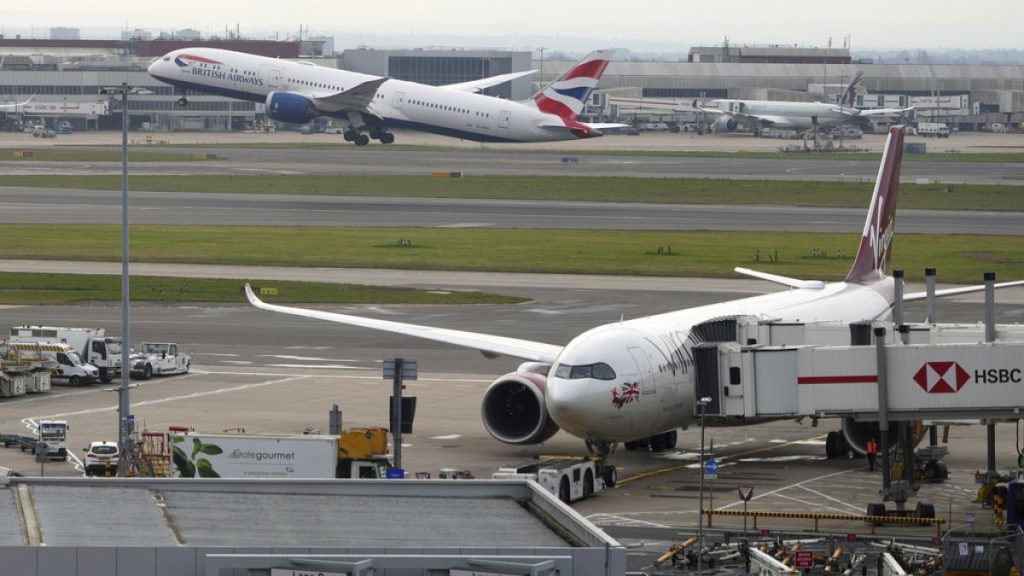Heathrow Airport, recognized as Europe’s busiest transport hub, faced significant operational disruptions due to a fire incident on Friday. The airport was forced to halt flights for an extended period, leading to the cancellation of over 1,300 flights and stranding around 200,000 passengers. Although operations resumed on Saturday, officials anticipate further delays and complications as airlines work to restore regular flight schedules.
| Article Subheadings |
|---|
| 1) Overview of the Incident |
| 2) Immediate Impact on Flights |
| 3) Response from Airport Authorities |
| 4) Public Reactions and Criticism |
| 5) Lessons and Future Precautions |
Overview of the Incident
A fire erupted at an electrical substation approximately 3.2 kilometers from Heathrow Airport on Friday, leading to a critical power outage affecting the airport and over 60,000 homes in the surrounding area. This incident resulted in the cancellation of more than 1,300 flights, leaving around 200,000 passengers unable to travel as planned. Firefighters successfully contained the blaze after seven hours, but the damage had already led to a significant operational shutdown. The incident, while alarming, is not considered suspicious, and authorities have initiated an investigation into the cause of the fire, focusing specifically on the substation’s electrical system.
Immediate Impact on Flights
The response to the incident saw a rapid plunge in operational capacity. For nearly 18 hours, the airport was essentially closed to all incoming and outgoing flights, prompting airlines to scramble in an effort to reallocate planes and adjust flight schedules. British Airways, Heathrow’s largest airline, managed to operate around 85% of its total 600 scheduled flights on Saturday. However, recovery from the chaos was described as “extremely complex” by airline representatives. Passengers arriving on about 120 incoming flights were redirected to various other airports, further complicating the situation.
Response from Airport Authorities
Officials at Heathrow commended the airport’s swift emergency response, stating that additional staff were mobilized to assist travelers during this chaotic period. Operators reported that extra flights were added to the schedule to accommodate an influx of approximately 10,000 passengers. However, the chief executive of Heathrow, Mr. Thomas Woldbye, faced criticism over the airport’s ability to manage such an emergency and was quick to defend the measures taken by the airport. He emphasized that the situation was not created by operations at Heathrow, reiterating that the power outage had multiple cascading effects that ultimately incapacitated normal functioning at the airport.
Public Reactions and Criticism
The incident triggered widespread frustration among stranded passengers, airline staff, and public officials alike. Many voiced concerns regarding the robustness of Britain’s infrastructure, questioning whether it is adequately prepared to handle such emergencies. Complaints spurred calls for a full investigation into the incident to ensure that similar occurrences could be mitigated in the future. Public sentiment was compounded by the fact that a single fire brought one of the busiest transportation centers in the world to a grinding halt, indicating potential vulnerabilities in emergency preparedness strategies. Additionally, reports from West London residents included dramatic accounts of hearing explosions and witnessing fireballs, further heightening concerns among those directly impacted by the incident.
Lessons and Future Precautions
Going forward, the Heathrow incident stands as a critical case study in risk management and emergency response for major transportation hubs. Experts underline the necessity for airports and other critical infrastructure to establish robust contingency plans that can effectively handle unforeseen events. Mr. Woldbye noted that while Heathrow’s backup power mechanisms operated as intended, they were insufficient to sustain the entire airport, especially given its energy consumption parallels that of a small city. This revelation highlights the need for ongoing assessments of emergency protocols and the resilience of infrastructure throughout the industry. Stakeholders are likely to engage in discussions aimed at learning from this incident and ensuring comprehensive policy reviews moving forward.
| No. | Key Points |
|---|---|
| 1 | Heathrow Airport experienced an 18-hour shutdown due to a fire at a nearby electrical substation. |
| 2 | Over 1,300 flights were canceled, affecting roughly 200,000 passengers. |
| 3 | British Airways managed to operate about 85% of its flights following the incident. |
| 4 | Officials have called for a full investigation to improve emergency preparedness in the future. |
| 5 | Review of the airport’s infrastructure is essential to prevent similar incidents moving forward. |
Summary
The recent disruption at Heathrow Airport serves as a stark reminder of the vulnerabilities that major transportation hubs face in the event of unexpected emergencies. With cancelations affecting thousands of travelers and prompting reviews of operational protocols, this incident highlights the urgency of improving infrastructure readiness and emergency response mechanisms. As investigations begin, stakeholders in both aviation and public safety are expected to prioritize solutions that ensure future resilience.
Frequently Asked Questions
Question: Why was Heathrow Airport shut down?
Heathrow Airport was shut down due to a fire at a nearby electrical substation that caused a significant power outage, leading to widespread flight cancellations.
Question: How many flights were canceled as a result of the incident?
More than 1,300 flights were canceled, impacting approximately 200,000 passengers stranded due to the disruption.
Question: What measures are being taken to improve airport infrastructure following this incident?
Authorities have called for a full investigation into the incident to identify weaknesses in emergency preparedness and ensure that airports implement more robust contingency plans moving forward.


